The first monographic exhibition dedicated to Bartolomeo Cesi (Bologna, 1556 - ivi, 1629), open from Nov. 22, 2025 to Feb. 22, 2026 in the Lapidarium of the Museo Civico Medievale in Bologna, offers a wide-ranging and documented review of the figure of the Bolognese painter, active between the second half of the 16th century and the first decades of the 17th century. The exhibition Bartolomeo Cesi (1556-1629). Painting of Silence in the Age of the Carracci, curated by Vera Fortunati and produced by the Municipality of Bologna with the Civic Museums, the Archiginnasio Library and the Archdiocese of Bologna, is part of the Jubilee 2025 program, with the collaboration of the National Museums of Bologna and the main partnership of Gruppo Hera. The itinerary aims to restore Cesi’s role within the city’s vibrant artistic geography in an era marked by close confrontation with the naturalistic revolution of the Carraccis. The painter, known mainly for works of religious destination, elaborated an autonomous language, distant from the direct naturalism of his three cousins and oriented toward a meditative dimension, built through motionless figures, intense but calibrated colors and isolated landscapes. Critics have often emphasized how his production anticipates the search for a supersensible ideal that would find full development in the painting of Guido Reni, suggesting a poetics in which contemplation surpasses observation of reality.
"There are pearls of our artistic heritage that still remain to be discovered today. The exhibition Bartolomeo Cesi (1556 - 1629)," says Daniele Del Pozzo, Assessore alla Cultura Comune di Bologna. “Painting Silence in the Age of the Carraccis is the first monographic exhibition dedicated to the painter and has the undisputed merit of bringing to light and restoring to proper attention an outstanding protagonist of the Counter-Reformation art scene in Bologna. The exhibition will touch several places and will constitute a widespread itinerary in the city and is in fact a virtuous system of joint work, coordinated by the Municipality of Bologna in close and valuable collaboration with the Archiepiscopal Curia of Bologna, the National Picture Gallery of Bologna, the University of Bologna, as well as sponsors, institutes and public and private organizations in the city. A decisive investment of resources - economic of course, but also of fundamental professional skills and human passion - that also made it possible to restore, on the occasion of the exhibition, three of the artist’s works; a real action of care for our common artistic heritage.”
“Bartolomeo Cesi’s artistic genius,” says Monsignor Stefano Ottani, Archdiocese of Bologna, “his personal spirituality and also his docility to the principles of Cardinal Paleotti, make him a model of a ’reformed’ artist, not ’against’ other artistic proposals: a new synthesis capable of recapitulating time and space in essentiality. It is necessary to stop in silence, meditating and praying, in front of his works to be mysteriously involved in them, to be drawn beyond the visible and the present.”
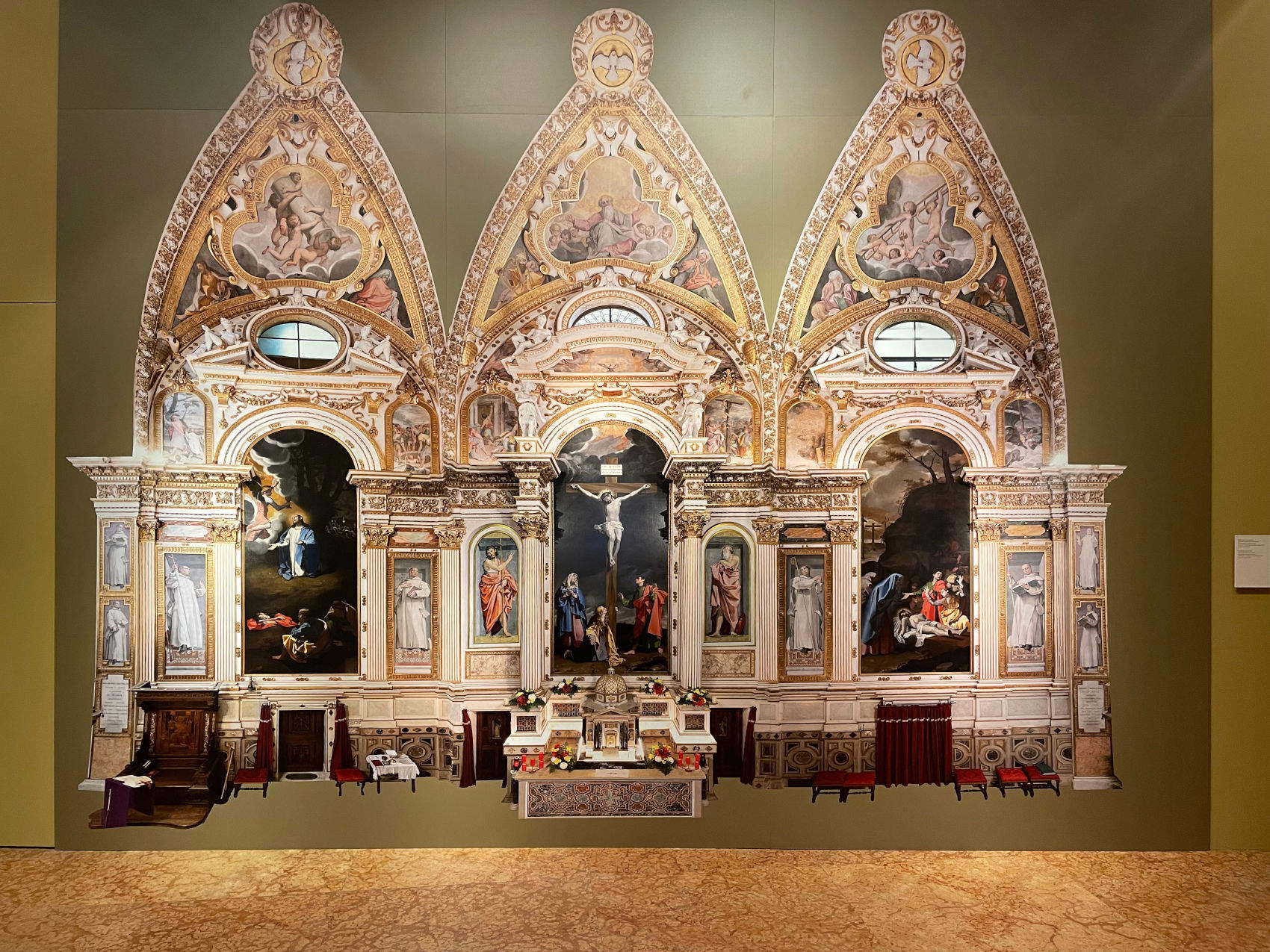
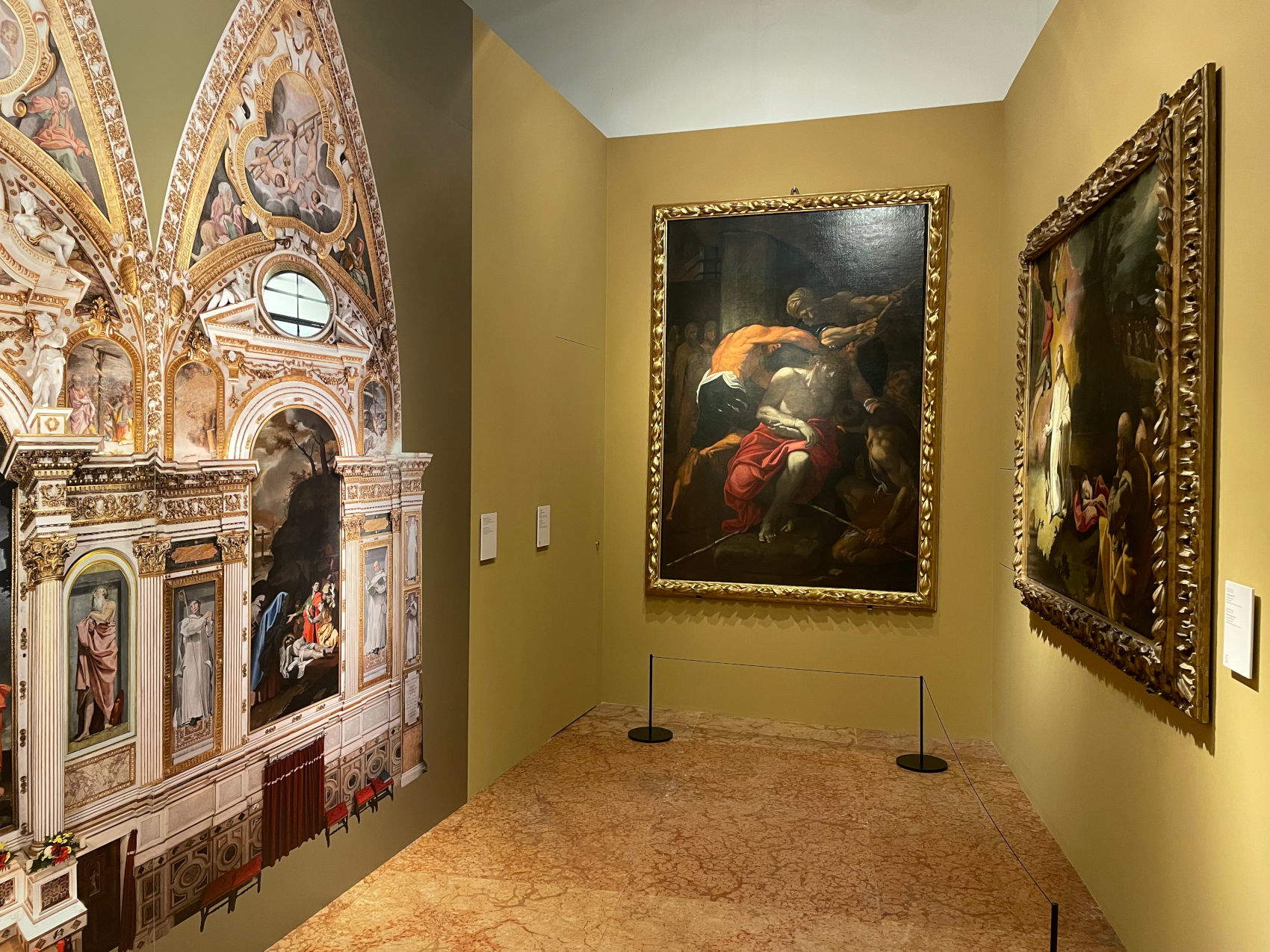
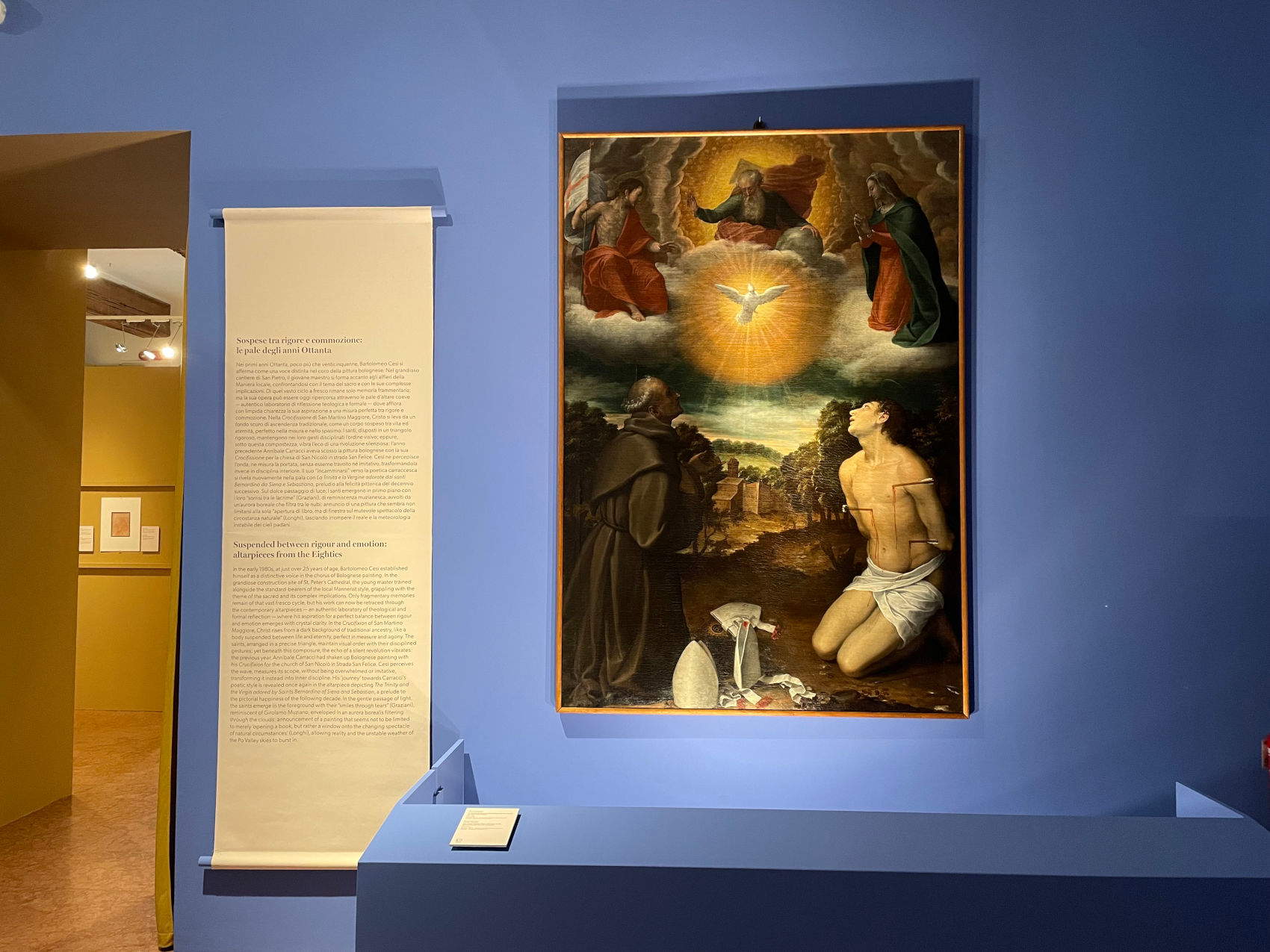

The exhibition also takes on an operative role on the city’s heritage thanks to the restoration work promoted by the Municipality of Bologna on four works that are difficult to access. These include the Trinity and Virgin adored by Saints Bernardine of Siena and Sebastian, from the Sant’Orsola Polyclinic; the altarpiece Madonna and Child in Glory and Saints Benedict, John the Baptist and Francis from the church of San Giacomo Maggiore; Saint Benedict seated from the Metropolitan City of Bologna; and Saint Francis praying from the Capuchin Friars Minor. The operations constitute a substantial contribution to the enhancement of Bologna’s religious heritage, which is still rooted in its places of origin. The critical reception of Cesi has gone through different phases. Historians such as Malvasia and Lanzi considered him a linking figure between Mannerism and Naturalism, capable of reconciling updated models with elements still linked to an earlier lexicon. Lanzi, in his Storia pittorica dell’Italia (Pictorial History of Italy), resumed appreciations already formulated by Malvasia, emphasizing his ability to offer a language that was measured, sharp and inclined to the truth of the natural. In the twentieth century, thanks in part to the contribution of Alberto Graziani, the idea of Cesi as an interpreter of the Counter-Reformation, attentive to narrative clarity and the ability to emotionally engage the viewer without resorting to dramatic overtones, was consolidated.
The exhibition examines the artist’s most fertile period, between 1585 and 1597, when Cesi confronted the innovations introduced by the Carracci, elaborating a personal synthesis between tradition and new directions. More than thirty works, including paintings, drawings and altarpieces, make up an itinerary divided into five thematic nuclei: formation, portraits, drawings, altarpieces and Carthusian cycles. The section devoted to formation presents the Bolognese cultural context of the late 16th century, marked by the reforming action of Cardinal Gabriele Paleotti and the religious climate promoted by the pontificate of Pope Gregory XIII, a native of Bologna. The Discorso sulle immagini sacre e profane published by Paleotti in 1582 profoundly influenced the local artistic milieu, promoting an idea of the sacred image as an instrument of spiritual edification and didactic mediation. Cesi, a pupil of Nosadella (Giovanni Francesco Bezzi) and trained within the Bolognese tradition, responded to these solicitations with particular attention, as shown by his interventions in St. Peter’s Cathedral between 1579 and 1585, unfortunately almost entirely lost.
The portrait section brings together four of the ten works attributed to the artist, highlighting his ability to investigate the interiority of the subjects portrayed. The Portrait of a 25-year-old Gentleman with Sword of 1585, preserved in Imola, represents a landmark in the definition of his portrait style. Exhibited alongside this painting is the Portrait of a Friar of 1592, characterized by a greater adherence to life, and the Portrait of a Carthusian in the robes of Dionisio Cartusiano, a small painting in which the figure appears immersed in an introspective dimension that recalls the Carthusian monastic environment, destined to become central to Cesi’s career. Drawing constitutes an essential area of his activity: Cesi devoted himself to studying from life, adopting a working method close to that of the young Carracci. The graphic works on display testify to an articulate design, nourished by heterogeneous references ranging from Raphael and Correggio to Tuscan reformers and Baroque Sienese. Portraits of young people caught from life, then used as the basis for figures of saints or prophets, highlight the intention to merge observation and idealization.

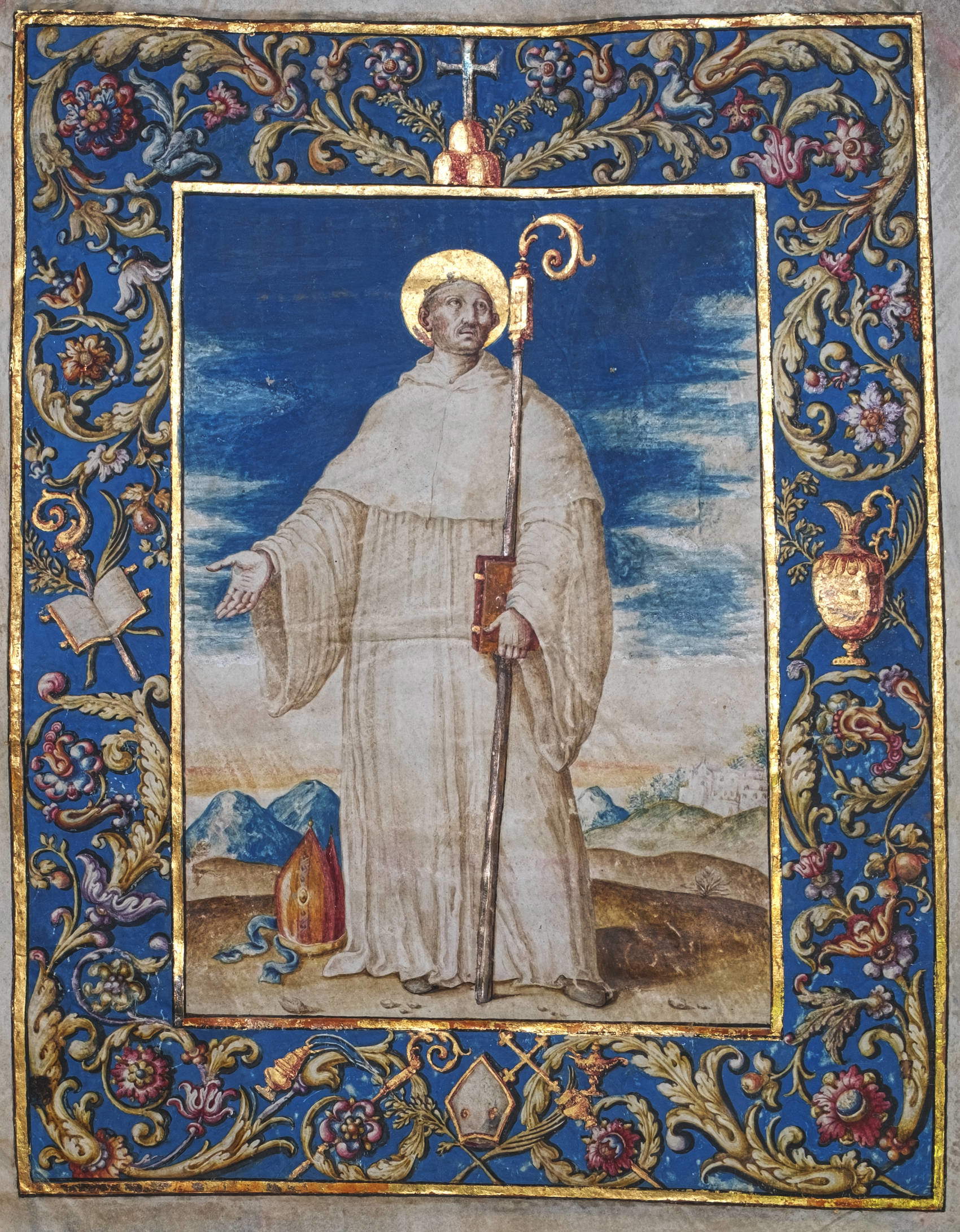
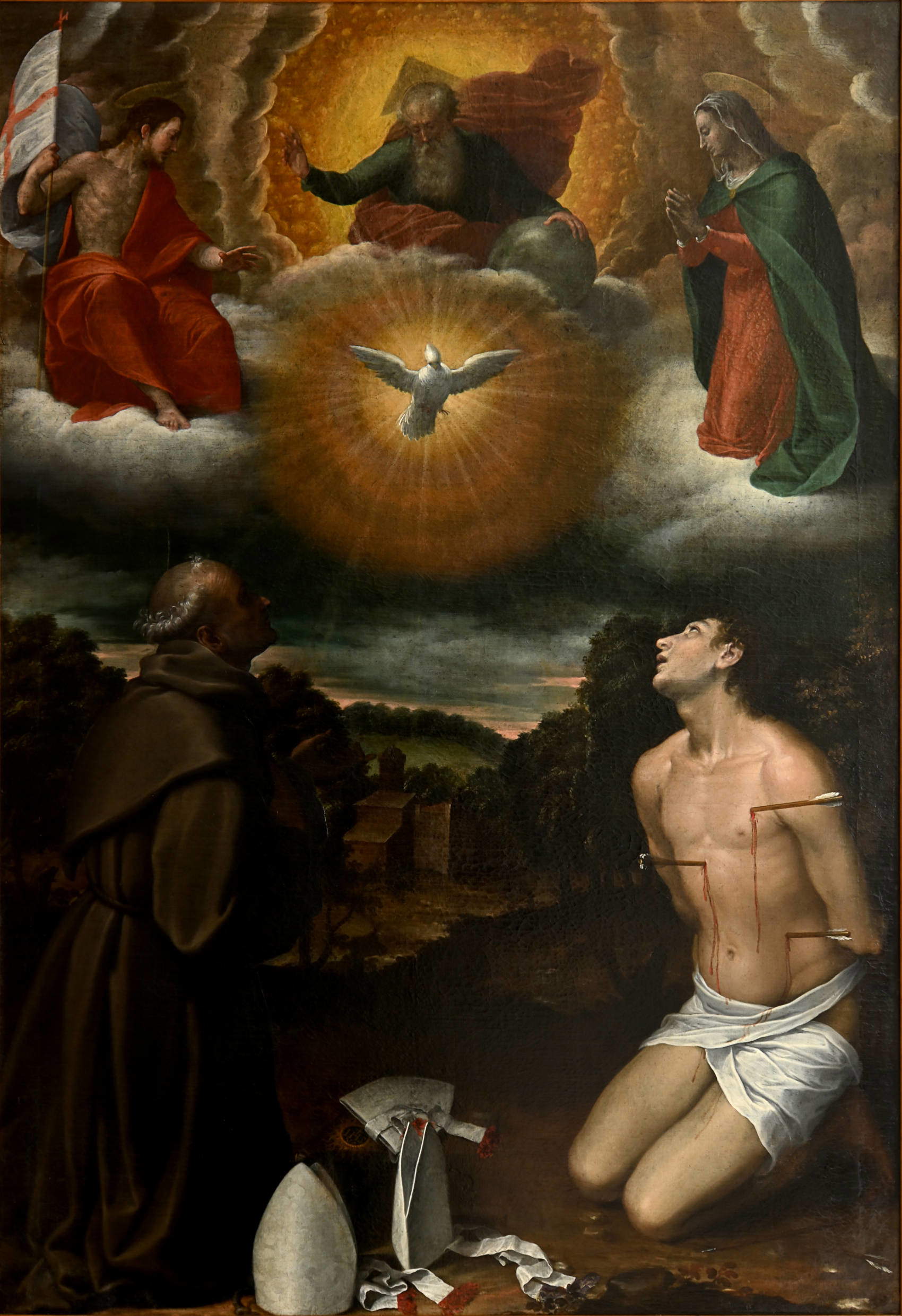

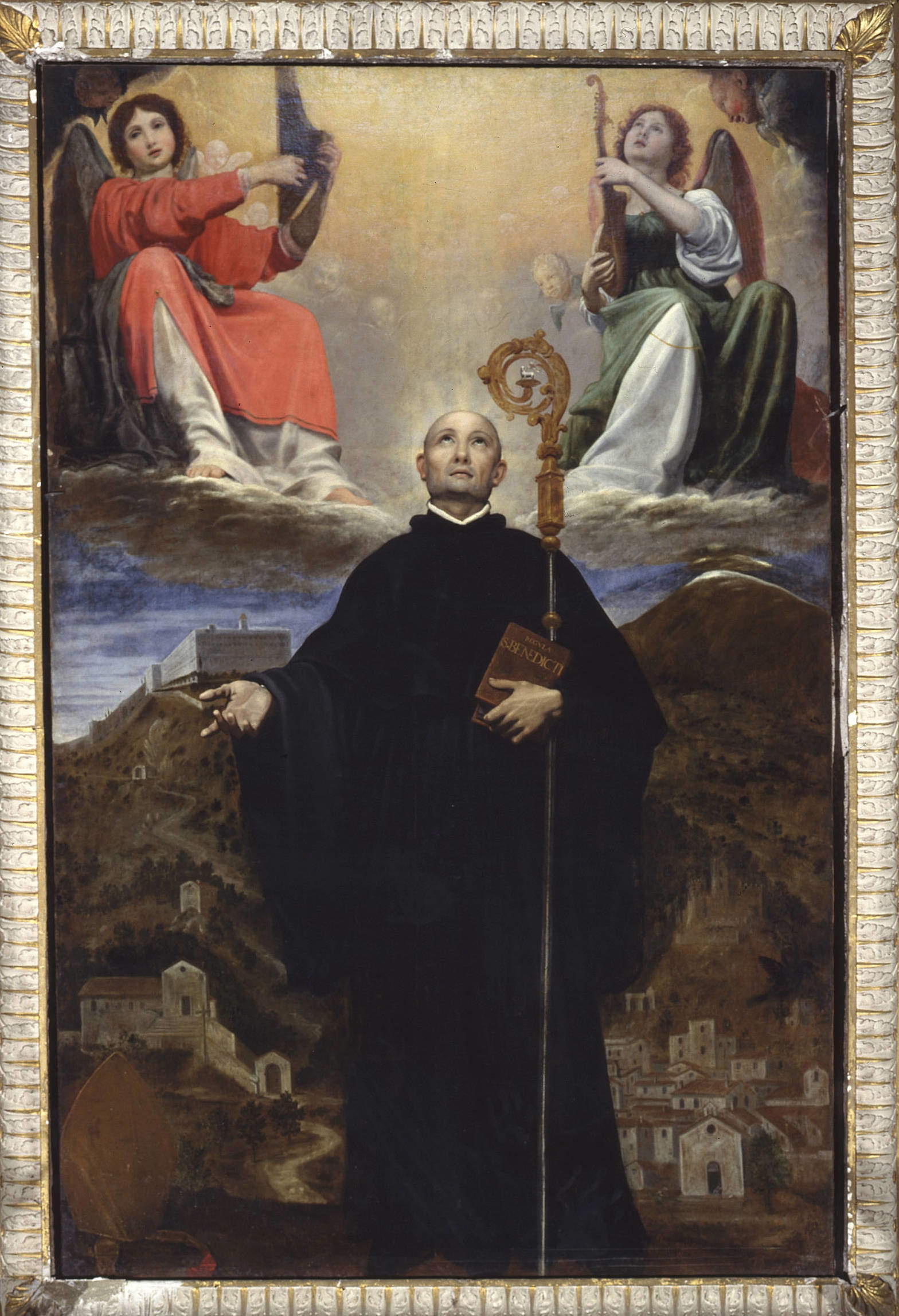
The next section brings together some of the most relevant altarpieces. In these works Cesi interprets Carracci’s naturalism, however, renouncing the more everyday aspects of representation, favoring instead a contemplative register. The implicit but obvious comparison emerges with respect to theAnnibale altarpiece Carracci of 1583 in Santa Maria della Carità, considered a scandal because of its direct language. Cesi, on the contrary, tends toward a balance between academic tradition and adherence to truth in his works, as in the altarpiece with the Crucifix with Saints Andrew, Peter, Toma, and Paul, painted between 1584 and 1585 for the basilica of San Martino Maggiore.
Notable works include those executed for the church of San Procolo, including St. Benedict Listens to Heavenly Harmony and Seated St. Benedict, paintings that combine monumentality, attention to landscape, and adherence to post-Tridentine dictate. The apex of Cesi’s maturity is identified in the altarpiece of Madonna and Child in Glory and Saints Benedict, John the Baptist and Francis, destined for the Paleotti chapel in San Giacomo Maggiore, considered by critics to be an emblematic example of Bolognese Counter-Reformation painting. The 1690s also mark the deep connection between Cesi and the Carthusian Order. The cycle for the main chapel of the church of San Girolamo della Certosa, painted between 1593 and 1597, represents one of the pinnacles of Bolognese painting of the period. The three large canvases dedicated to the culminating moments of the Passion, originally placed in the monks’ choir, show a rigorous visual construction, enriched by the presence of Carthusian figures placed in the painted niches.
The ensemble, now considered a cornerstone of post-Tridentine painting, is presented in the exhibition along with Ludovico Carracci ’s two canvases for the opposite walls of the choir, the Flagellation and Jesus Christ Crowned with Thorns, made between 1597 and 1599. The comparison highlights two divergent approaches: Ludovico’s realistic crudeness, not always appreciated by the religious, and Cesi’s choice for a more composed and meditative language. The exhibition is complemented by a digital experience accessible through the MuseOn app, which allows visitors to explore 23 works in the exhibition through texts and audio content in Italian and English. A virtual reality reconstruction also allows visitors to see again the Stories of the Virgin frescoed by Cesi in the chapel of Santa Maria dei Bulgari at the Archiginnasio, lost in the 1944 bombing and now recreated thanks to Felice Croci’s photographs. The intervention is part of the project SIMBOLO - The digital system of the Civic Museums of Bologna towards the future, supported by the Emilia-Romagna Region’s PR-FESR 2021-2027 European funds.
“The exhibition dedicated to Bartolomeo Cesi,” continues Costantino D’Orazio, Interim Director National Museums of Bologna - Regional Directorate National Museums Emilia-Romagna, “immediately saw the National Art Gallery of Bologna participate with great enthusiasm, not only because the initiative makes it possible to enhance the value of some of the masterpieces inside the museum, which the public will be able to admire with even greater attention and awareness, but also because the spirit of collaboration between the Bologna institutions responds perfectly to the mission of our Institute. A national museum is the custodian of a heritage that corresponds to the cultural identity of a territory, with which it must always connect and for which it must work, in order to contribute to the social development of the context in which it is inserted.”
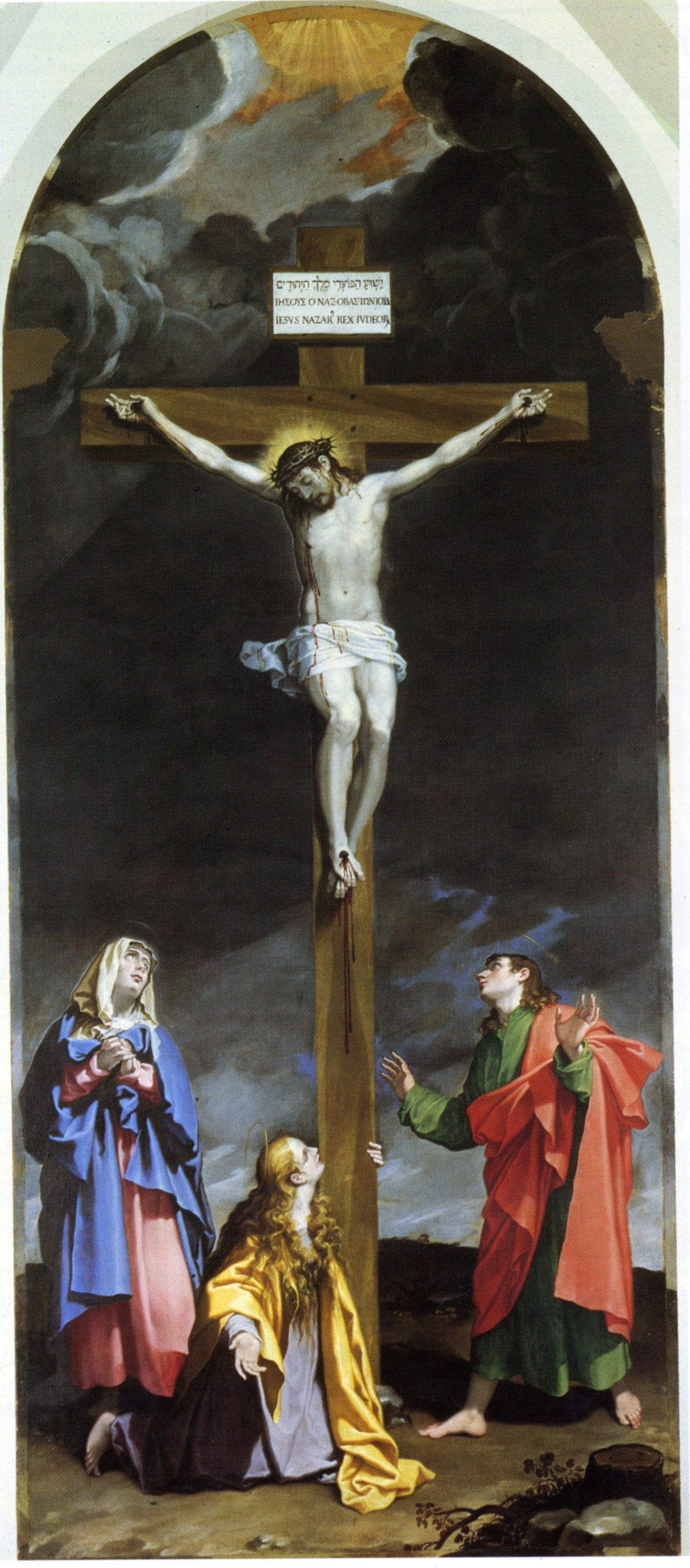
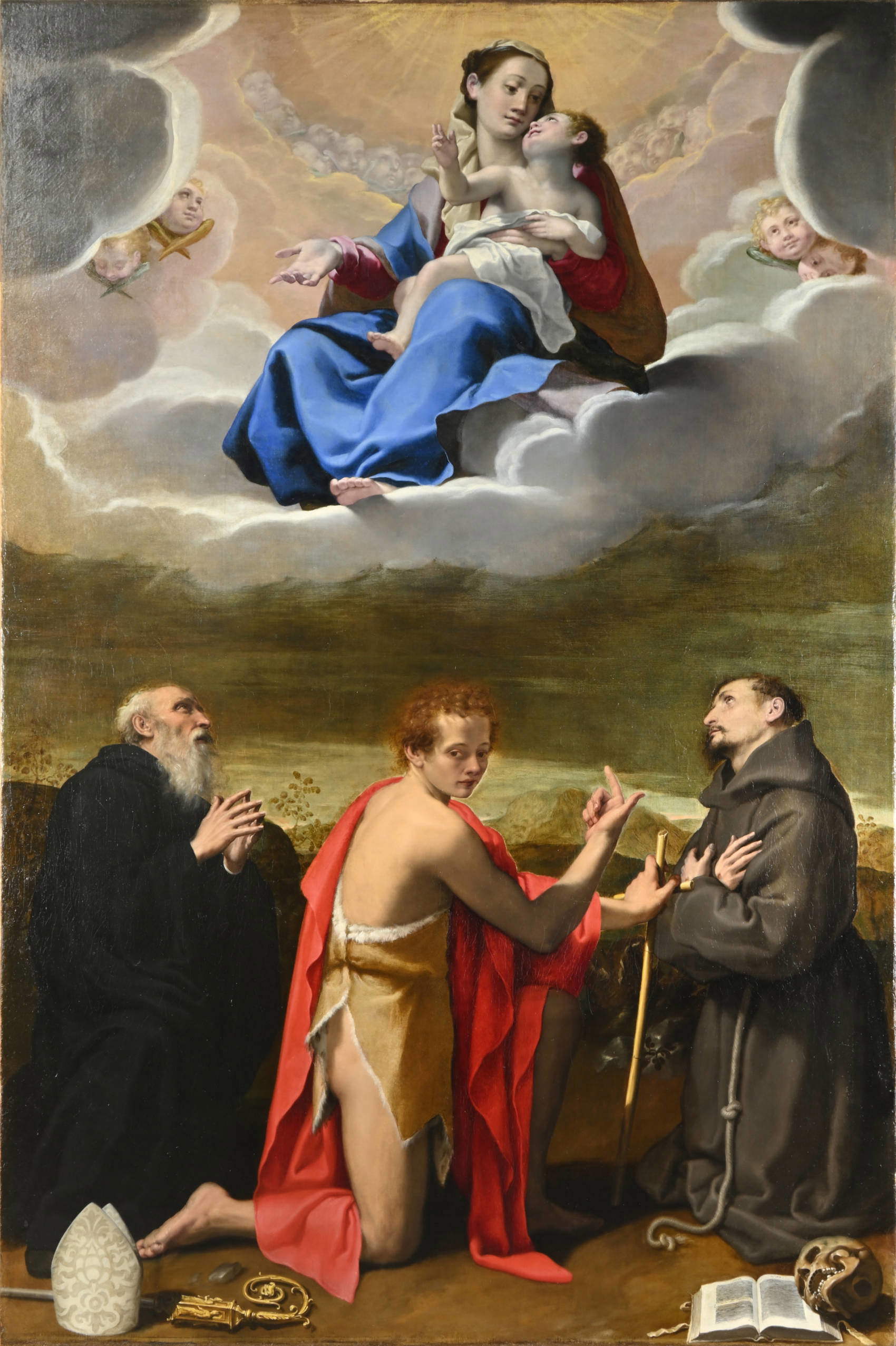


“I was 20 years old,” says Vera Fortunati, former Alma Mater Studiorum Professor of History of Modern Art - University of Bologna and exhibition curator, “when, in my first university exam in Medieval and Modern Art History, also carrying as a syllabus the catalog of the exhibition Maestri della pittura del Seicento Emiliano (1959), I got to know Bartolomeo Cesi through the cards of some of his paintings edited by Francesco Arcangeli. I was fascinated by the personality of this painter who appeared profoundly different from all the others. It was a youthful love that grew over time so much so that, after the 1994 exhibition on Lavinia Fontana, I presented a project dedicated to Cesi and the Bolognese historical artistic context of the mature sixteenth century, a project that did not find the consent and support of the city’s institutions. Finally, it was the knowledge of the beautiful doctoral thesis on the paintings of Bartolomeo Cesi by the young scholar Flavia Cristalli (Scuola Normale di Pisa) that convinced me that perhaps the time had come for a dialogue between scholars different in generation and training on this extraordinary artist. It was in this context that my new project was born, which sought to privilege the happiest period of Cesi’s production (c. 1585-1597) when Bartolomeo, confronting the innovative experimentalism of his Carracci contemporaries, arrived at a sublime naturalistic classicism: a high figurative quality where art sinks into a path of silence and prayer proper to the monastic orders with which the painter loved to work.”
The exhibition finds a natural completion in the rooms of the Pinacoteca Nazionale di Bologna, where the recently renovated exhibition itinerary allows direct comparison of Cesi’s works with those of Carracci and Guido Reni. Here, from Raphael’s St. Cecilia to the great seventeenth-century altarpieces, the interweaving of Mannerist tradition, Carracci reform and post-Tridentine spirituality emerges, fundamental elements for understanding the work of the Bolognese painter. The exhibition program includes free guided tours by appointment, activities for adults and families, and three urban itineraries organized by Fondazione Bologna Welcome, dedicated to the places where Cesi worked. The initiatives aim to enhance the city’s heritage and encourage direct knowledge of the works still present in the area. The exhibition is accompanied by a catalog published by Silvana Editoriale, with essays by numerous scholars. Also available is a guidebook, edited by Giovanna Degli Esposti, which presents Cesi’s works preserved in Bologna through an itinerary organized by type of place. The entire exhibition project is made possible thanks to the collaboration between public institutions and private entities engaged in the protection and promotion of the city’s artistic history.
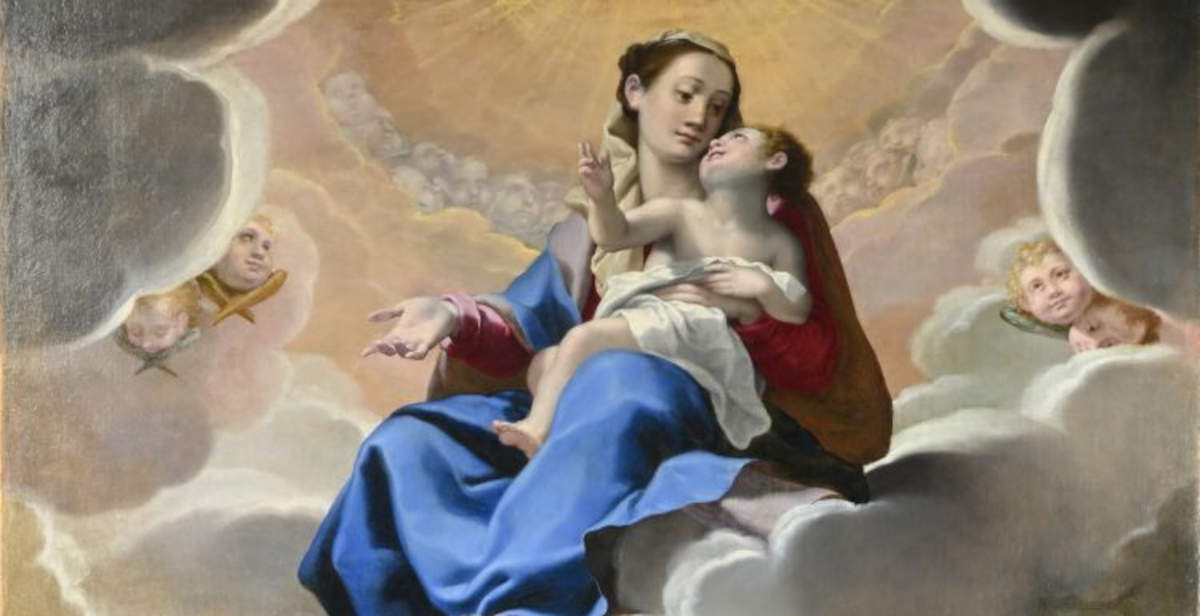 |
| Bartolomeo Cesi in Bologna: a critical reinterpretation in the age of the Carracci at the Museo Civico Medievale |
Warning: the translation into English of the original Italian article was created using automatic tools. We undertake to review all articles, but we do not guarantee the total absence of inaccuracies in the translation due to the program. You can find the original by clicking on the ITA button. If you find any mistake,please contact us.